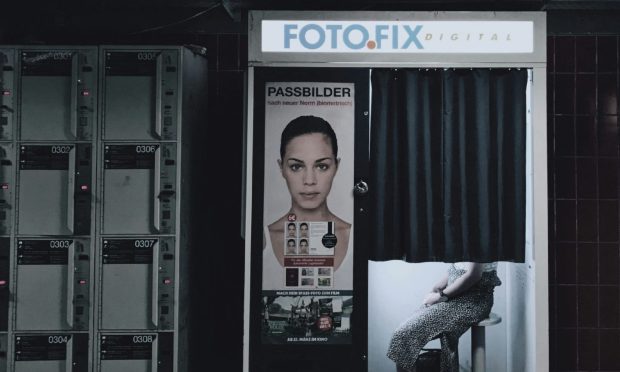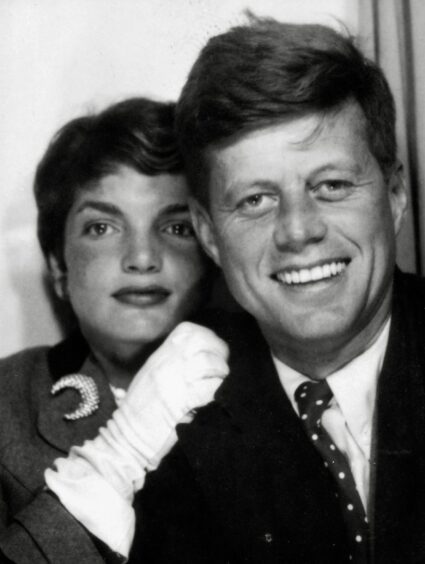
Pull the curtain closed. Adjust the seat to get the height just right. Try to avoid blinking as the light flashes… and then wait outside for what feels like forever to see the results. It was all part of the experience in years gone by of using an analogue photobooth.
The century-old format – a favourite among young couples as well as its more formal use as an identification process – slowly slipped out of favour as technology advanced. In a time of selfies and digital technology, the analogue photobooth became archaic. Yet retro-loving younger generations are recognising the old-school booths for their rich and vibrant history in popular culture and now the cameras are making an unlikely comeback.
Finding renewed popularity in cities such as New York, Berlin and London in recent years, Edinburgh will become the latest place to redevelop a relationship with the throwback photobooths when the Stills Centre For Photography unveils its Stillsautomat to the public on October 19.
Caitlin Serey, the centre’s development manager, explained why.
“We’re a registered charity – our ethos is art is for everyone – but with the funding climate for arts at the moment, I’ve been looking at ways we can raise money. I saw an analogue photobooth in London and people were queueing up to use it. I thought it could be a way of not only making money but of reaching a new audience as well as our existing audience. It also fits with our spirit of preserving analogue as a cultural artefact.”
According to Caitlin, there are only around 200 working analogue photobooths left in the world and even fewer technicians to maintain them. They purchased theirs last November – it was refurbished in New Jersey in the USA and shipped to the UK.
“Our contact, Rafael, manages all the photobooths in London,” Caitlin said. “When he came to Edinburgh to get ours ready, we asked him about the common things to go wrong, but he says it will have its own quirks and problems and we’ll need to figure those out along the way.
“We have a camera inside the photobooth, not only for people to watch their photos being processed, but so Rafa can remotely access it.”
Caitlin describes the developing process as “dip and dunk”, similar to what happens in a traditional darkroom.
“There is a photostrip of paper which goes through a mechanical process, almost like a wheel of chemicals, bleach and water, where it is dipped in each of the tanks. It takes about five minutes – very different from digital – and there are no negatives, no digital files. That strip of pictures is the only one that will ever look like that.”
New York City was home to the first photobooth in the 1920s and became a huge hit, its success quickly replicated around the world. “It was in the late 1930s when it became part of the standard identification process,” Caitlin continued. “People were told not to smile or mess around inside. But artists – surrealists, Andy Warhol – began using them too.
“Photobooths were the only type of photography at the time that didn’t have a photographer, so you could do whatever you wanted behind there. This was also an era when photographers might refuse to take pictures of mixed race or queer couples, so it was a place for them too.”
Polaroids were the first thing to adversely impact the popularity of the booths, and then digital left analogue in the dark. Many were thrown in skips, rendered redundant as technology advanced.
“Now people are starting to re-explore and realise how unique analogue photography is, and that’s why it’s making its way back into the world,” Caitlin said. “We expect ours, which produces black-and-white photos, to appeal to older generations who remember it from before, and to a younger generation into retro.”
As well as producing great quality photos, Caitlin also believes the analogue photobooth experience provides something unique. “I’m convinced no-one looks bad in an analogue photobooth picture – each one that comes out is special,” she added. “People usually prepare to hold their camera in a certain way for selfies, but with the photobooth there is an unpreparedness that gives an authenticity to the pictures. It’s a fun thing to be part of.”
Readers share their favourite pictures from times gone by
Some of The Post’s readers shared their fond memories of using photobooths.
“This picture was taken on our first holiday together in Southport in 1958,” explained Jim Thompson. “I have happy memories of that holiday, so much so that we went back in 1959, 1961 after our marriage, and in 1963 with our baby daughter, and always to the same guesthouse.”
Jim and Margaret met at the dancing in St Andrews Halls in Glasgow. It was September 1956 and he had just left national service in the RAF.
“I saw a beautiful young woman sitting in an alcove and asked her to dance with me. We spent the rest of the evening together and she agreed to a date the following week. The rest is history.”
Margaret lived in Clydebank and Jim in Auchinairn in East Dunbartonshire. Neither had a car but they enjoyed a four-year courtship by meeting in Glasgow city centre. They were engaged in November 1958 and married in September 1960, and they went on to have three children.
Work took the family to the east coast, and when Jim retired they settled in Dunbar. Margaret sadly passed away at Christmas 2012. The couple had been together 56 years.
Jim added: “The photobooth picture is special as it reminds me so much of a beautiful, carefree young woman. The original is now with my granddaughter in Australia. She sent me a leather-bound book with empty pages titled A Grandfather’s Life, which I filled with my life story and family photos. She wanted it for my great-grandchildren, who were born in Australia, so they would know of their Scottish heritage.”
Elizabeth O’Regan said: “My friend and I were on a WI outing to Grimsby. We needed passport photos so went into Woolworths. The results were appalling and we couldn’t stop laughing. We laugh about it to this day.”
Sandra Peterkin said: “The last time I used one was with my old mum, Nettie, to get her bus pass pictures. It took about 30 minutes – she kept blinking as it took her picture or she would slip off the seat and we only got the top of her head!”
Morag Maich said: “My favourite memory is receiving a photo of my pen pal. There had been a shout-out in a newspaper for pen pals for soldiers, which I replied to. I received a few replies. One of them I married and we’re still together 36 years later.”
Jim Malone said: “I carry photobooth photos in my wallet of my wife, children and grandchildren. My favourite is Pamela and I as a young couple in 1978.”

Enjoy the convenience of having The Sunday Post delivered as a digital ePaper straight to your smartphone, tablet or computer.
Subscribe for only £5.49 a month and enjoy all the benefits of the printed paper as a digital replica.
Subscribe © JFK Library/THA/Shutterstock
© JFK Library/THA/Shutterstock